The culture of Vietnam is a concoction of the cultures of China, neighbouring Cambodia and France. Although situated in the south-eastern part of Asia, Vietnam had been under Chinese rule, and hence its culture is very similar to that of China.
It is mostly regarded to be a melting pot of the migrants from China, Japan, Taiwan and Korea due to this. The rulers in Vietnam then went on to acquire other parts of the Khmer regime, thus assimilating elements of Cambodian culture as well.
The colonial influence of the French is also seen in Vietnam through the use of the Latin alphabet, rise of Catholicism and the prevalence of bread and pastries in food.
Religion in Vietnam

The people of Vietnam mostly follow three major religions: Taoism, Buddhism and Confucianism. The people also follow ancestor worship. Homes and offices usually have ancestral altars. As a testimony to this practice, Vietnam has various Buddhist and Confucianist temples such as the Thein Mu Pagoda, Perfume Pagoda and the Bai Dinh Pagoda. The Cao Dai Temple is, however, one of a kind. It considers all religions as equal, and people of all faiths take an active part in its ceremonies.
There is also a rise in the number of people who are following Catholicism due to the influence of the French colonialism. The Notre-Dame Basilica in Ho Chi Minh City, which has been built with bricks imported from France shows the colonizers’ effort in propagating Christianity in Vietnam.
There are also a few Hindu temples in Vietnam like the Mariamman Temple which is believed to have been established by Hindu traders and is popular among the minority Hindu chams group.
Traditional Clothing in Vietnam
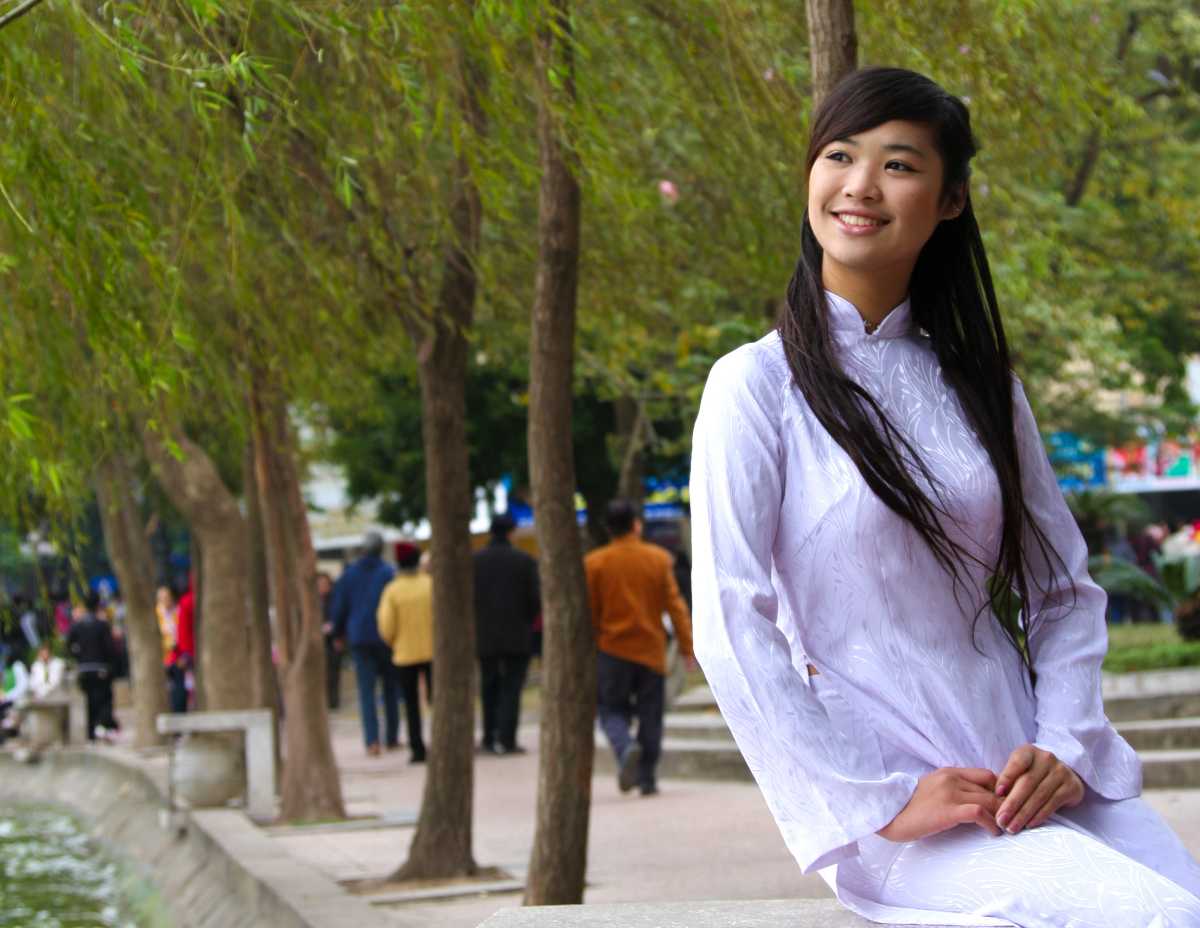
The traditional clothing style of Vietnam has undergone various changes throughout history under the rule of many dynasties. The Ao Dai, however, has stood the test of time. Once worn by both men and women, the ao dai now remains mostly a woman’s apparel. Western outfits have taken over the clothing style of Vietnam these days, and the Ao Dai is either worn on special occasions or as uniform in schools and workplaces. Another traditional Vietnamese apparel is the Non-La – the conical hat which has become the hallmark of Vietnam’s culture.
Do make it a point to buy the traditional Ao Dai and Non-La when in Vietnam! The price of an Ao Dai starts from VND 500,000, and the Non-La can be purchased at just VND 25,000!
Languages in Vietnam
Vietnamese is the majority language and has been highly influenced by Chinese. There are also influences of French (due to the colonial past) and Russian and English (due to the respective combatant forces during the Vietnam War). Apart from Vietnamese, other languages such as Tay, Khmer, Muong and Cham are also spoken by the various ethnic groups here. Foreign languages such as Chinese and French are also understood.
English is spoken well by many people in the urban parts of Vietnam, and hence tourists might not face much of a language barrier when travelling. However, you might face a problem if you plan to travel to rural areas of Vietnam.
Art Forms of Vietnam
1. Literature
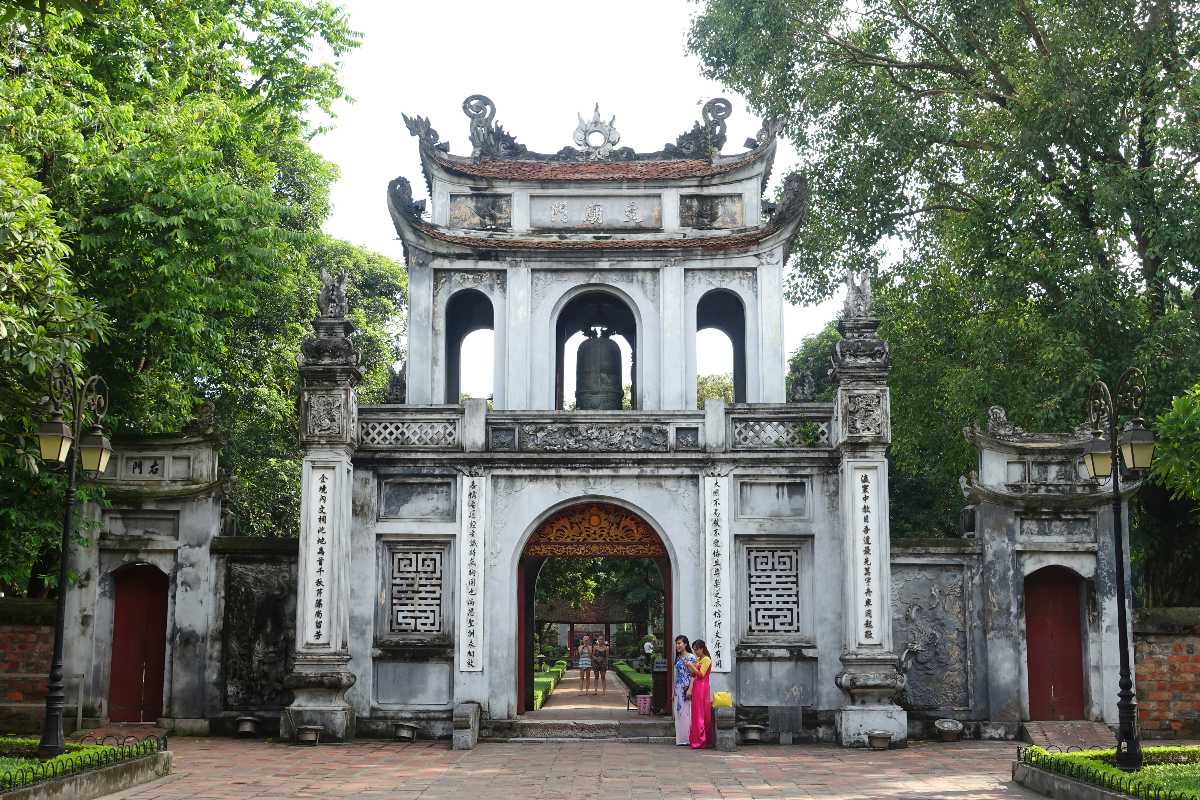
Vietnamese literature is mainly of two kinds – Folk and Written. The folk literature consists of legends, mythological stories, fairy tales, folk songs and poems which remain part and parcel of the people of Vietnam. The folk literature was mainly focused on appreciating the beauty of nature, humanism and moral virtues. The written literature, on the other hand, which was heavily influenced by the Chinese language, consists of novels, poems and dramas. Modern literature has ranged from romanticism to realism, touching upon wars and showcasing the daily life of people in Vietnam.
If you are someone who appreciates literature, visiting the Temple of Literature which houses Vietnam’s first university – The Imperial Academy and the Vietnam Literature Museum, both in Hanoi is a must-visit part of your itinerary.
2. Silk Painting

Vietnam is famous for its silk paintings. While silk paintings are well-known in China and other East-Asian countries as well, the French influences, coupled with the liberal use of colours in the paintings set the Vietnamese silk paintings apart. These paintings usually portray everyday life in Vietnam.
3. Calligraphy

Although the art of calligraphy in the olden times was restricted to the elite, it formed an essential part of Vietnamese culture and continues to be. Calligraphy is practised in three different scripts – Chinese, Chu nom and Quoc Ngu. The first two have become somewhat obsolete now, and modern calligraphy is done only in the Latin based Quoc Ngu script. Vietnamese people usually buy calligraphy hangings for their homes on special occasions such as the Lunar New Year.
4. Woodcut Painting

Vietnamese Dong Ho woodblock paintings are made by cutting intricate designs in wood, applying organic paints on it and pressing it on paper. Off late, this art form has gained popularity outside of Vietnam as well. Woodblock paintings are often bought during the Lunar new year, and hence the themes such as good omens, popular stories and everyday life are painted in bright colours to portray optimism for the new year.
You can visit the Dong Ho village during the Lunar New Year holiday to indulge in a painting fair and buy one as a souvenir!
Performing Arts in Vietnam
1. Dances of Vietnam
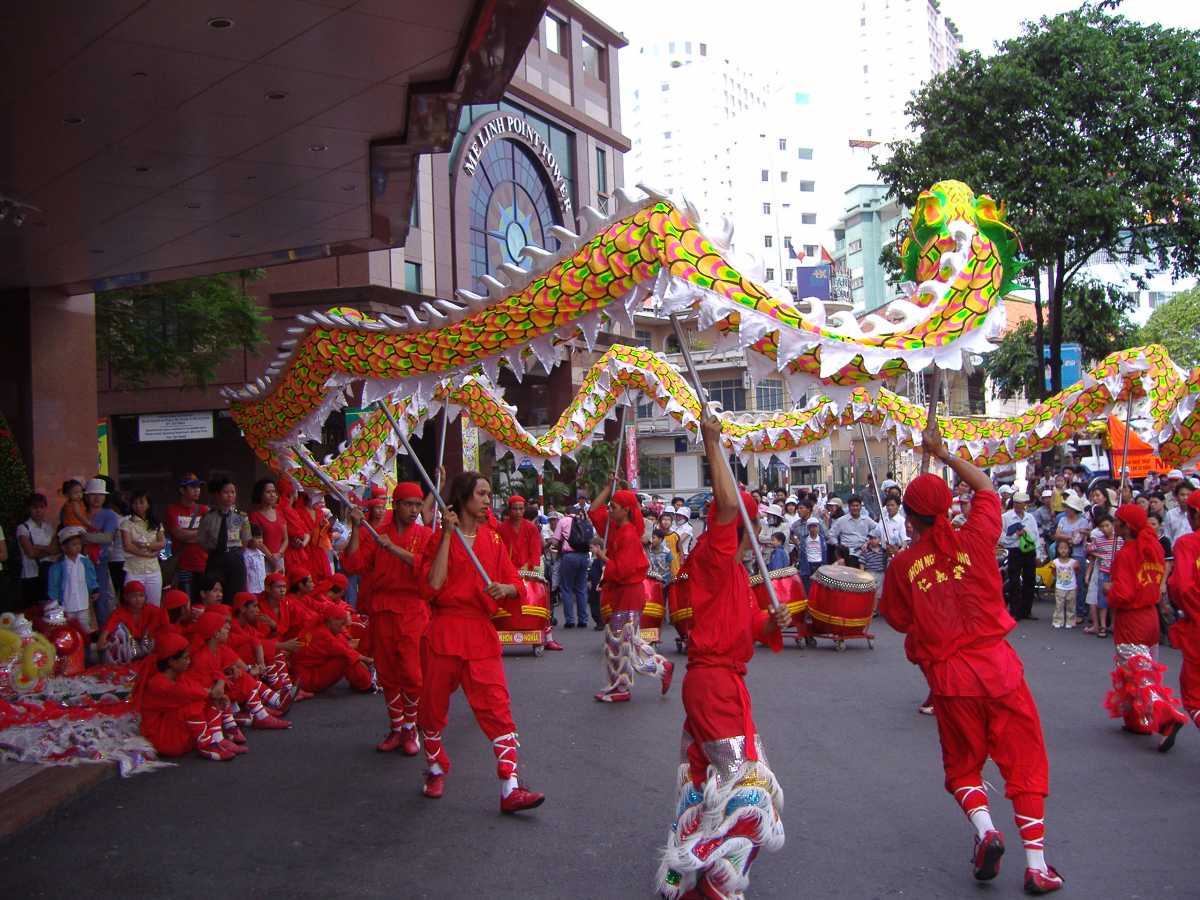
Dance forms an integral part of Vietnam’s culture. Different ethnic groups have their own dance forms. The traditional dance forms include those performed in theatre, opera, festivals and the erstwhile royal court. The well known Lion Dance is performed on festivals and is believed to ward off evil spirits. Other forms of Vietnamese dance include the Lantern Dance, Fan dance, Lotus Dance and the Ribbon Dance.
2. Music in Vietnam
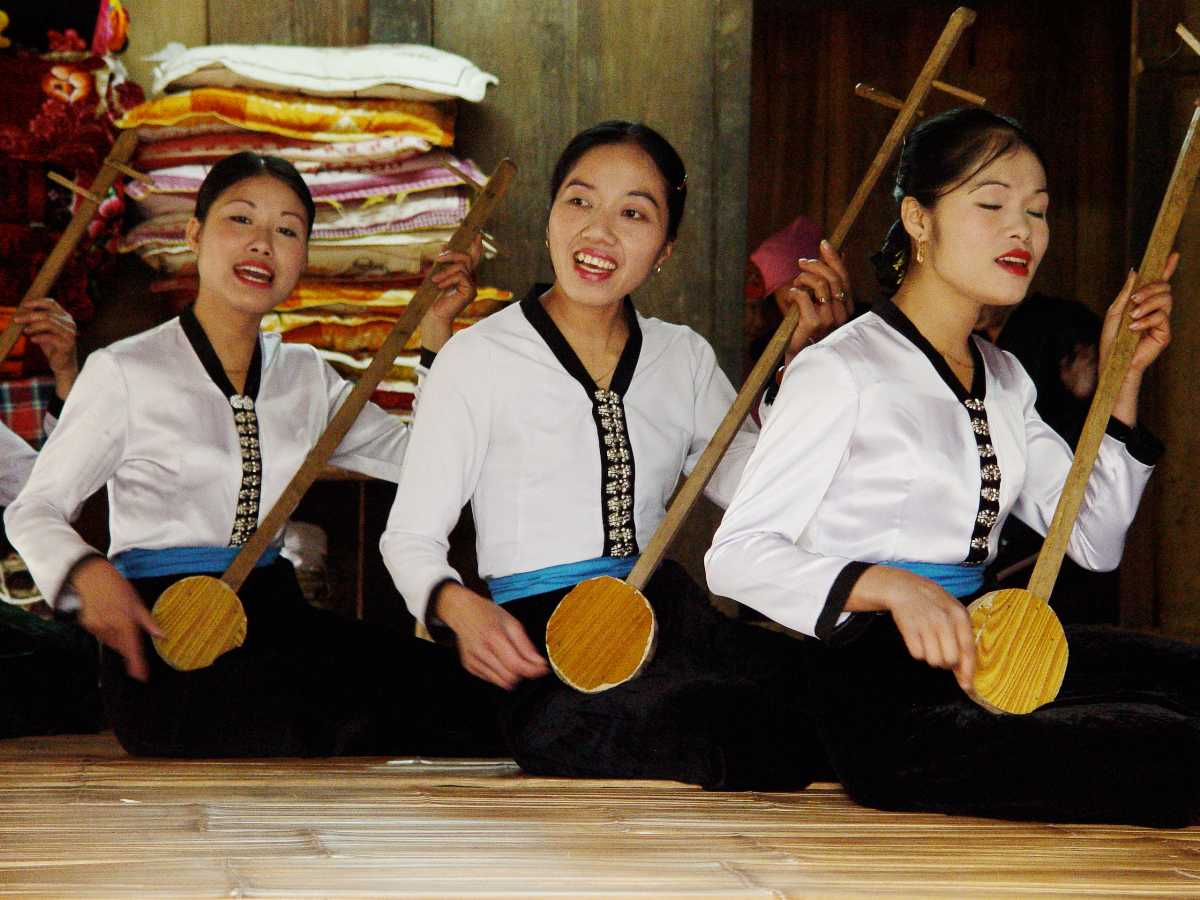
Vietnamese music cannot be isolated from dance and theatre. The music here has a rich heritage dating back to the Nguyen dynasty. Vietnam has almost 50 national musical instruments which include string, percussion and wind instruments extensively used in other art forms as well. Music of Vietnam is mostly of three kinds: the folk music whose style gradually varies with the region, the imperial music performed in the royal courts as a ritual and Ca Tru – a form of chamber music which has been identified as an intangible heritage by UNESCO.
You can enjoy an authentic Vietnamese dance and music show served with traditional tea and cookies at the Phuong Bao Music Centre, Ho Chi Minh City. Ticket prices range between VND 320,000 and VND 380,000.
3. Martial Arts in Vietnam
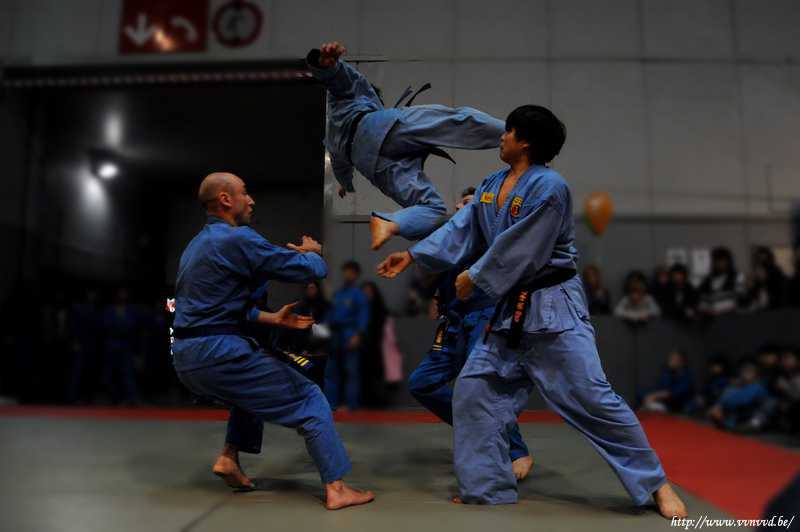
Not as renowned as its Chinese or Japanese counterparts, Vietnamese martial arts is, however, being recognized around the world these days. The martial art, although heavily influenced by Chinese martial arts, is still very distinct. It is a profoundly spiritual discipline deriving its philosophy from Buddhism and Taoism. Vo Thuat (as the Vietnamese call it) is most famous for its scissor kicks.
4. Water Puppetry in Vietnam

Mua Roi is an art form which has been identified as an intangible cultural heritage by UNESCO. It involves brightly coloured wooden puppets placed in water and handled with long poles beneath the water stage showcasing the various traditions of the country.
You can enjoy a water puppet show at just about VND 230,000 at the Golden Dragon Water Puppet Theatre, Ho Chi Minh City.
Cuisine of Vietnam

Regarded as one of the healthiest cuisines in the world, Vietnamese food just like its art forms is deeply meaningful. The food is cooked in such a way that it appeals to the five senses of the body and encompasses five major nutrients and the five fundamental tastes. One can find a generous use of fresh vegetables, herbs and meats in the cuisine. The French influence is also very evident in their food. Most dishes are noodle or broth-based and are colourful, hence appealing to the eye. The food also uses very little oil and dairy and is mostly gluten-free, since rice is more widely consumed instead of wheat.
Must-try dishes are Pho, Goi Cuon, Com tam and the very famous Banh Mi!
Festivities and Holidays in Vietnam

Various festivals are celebrated in Vietnam with much pomp and grandeur, the most famous ones being Tet (Lunar New Year) and the Tet Trung Thu (Lantern Festival). The best experience of the Lunar New Year is at Hanoi with a host of parties and fireworks. Tet Trung Thu being a harvest festival is very colourful and people gather to light lanterns. The lion dance is also performed on this day. Other holidays in Vietnam are the Reunification Day and the Independence Day where parades and other exhibitions are organized.
If you are visiting Vietnam during any of these holidays, make sure you take part in the celebrations as these are memories for a lifetime!
Source:


